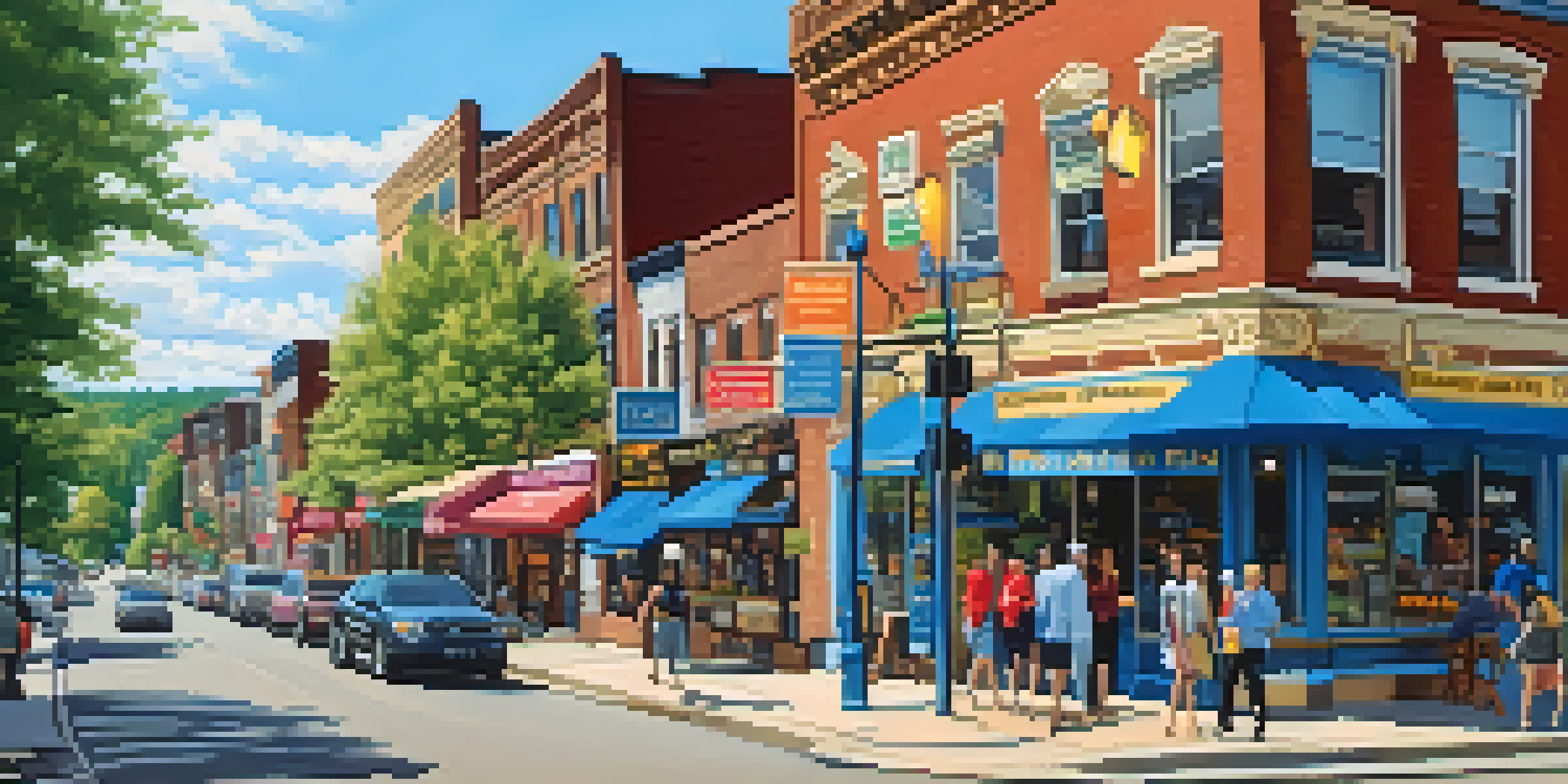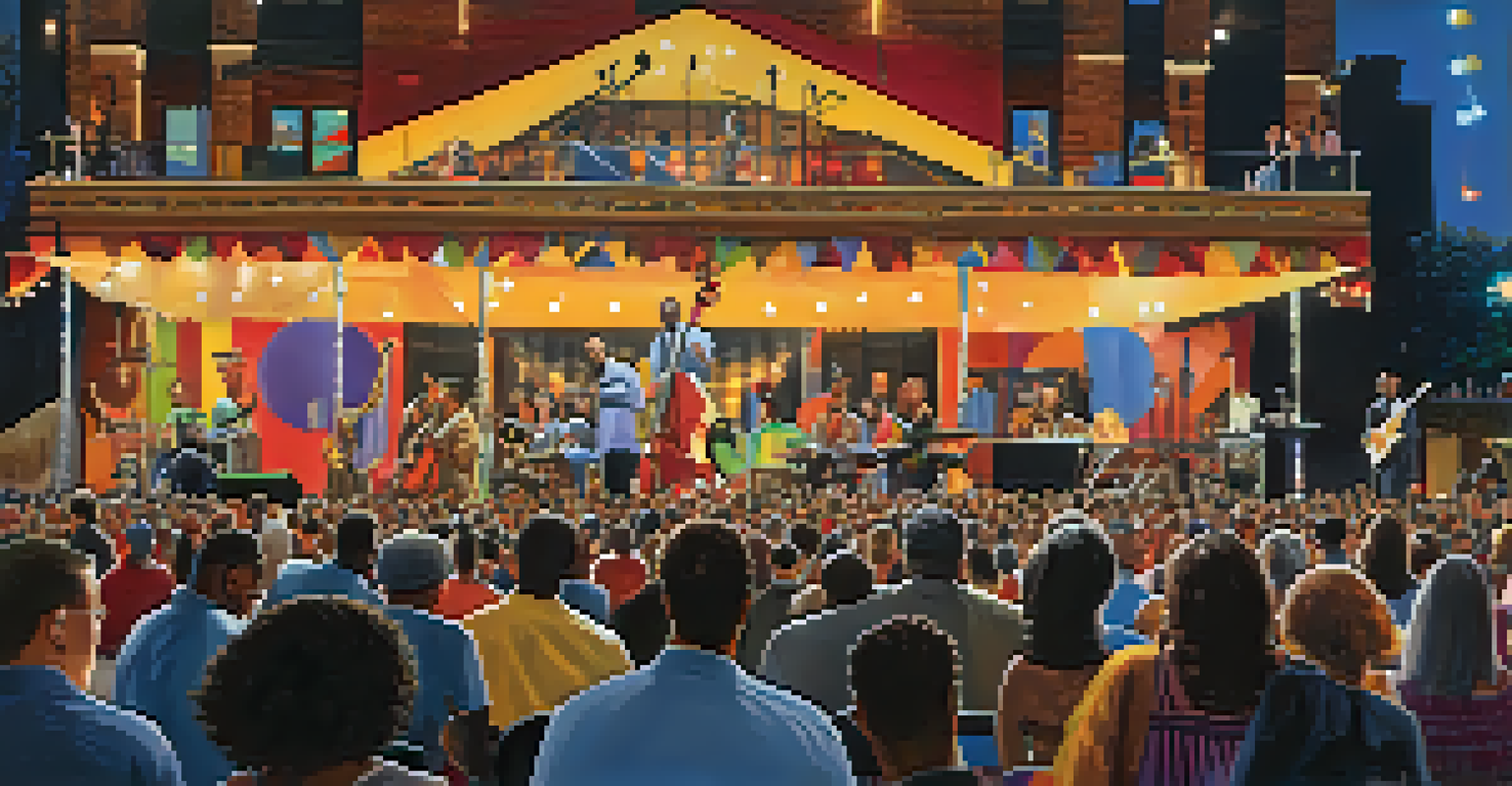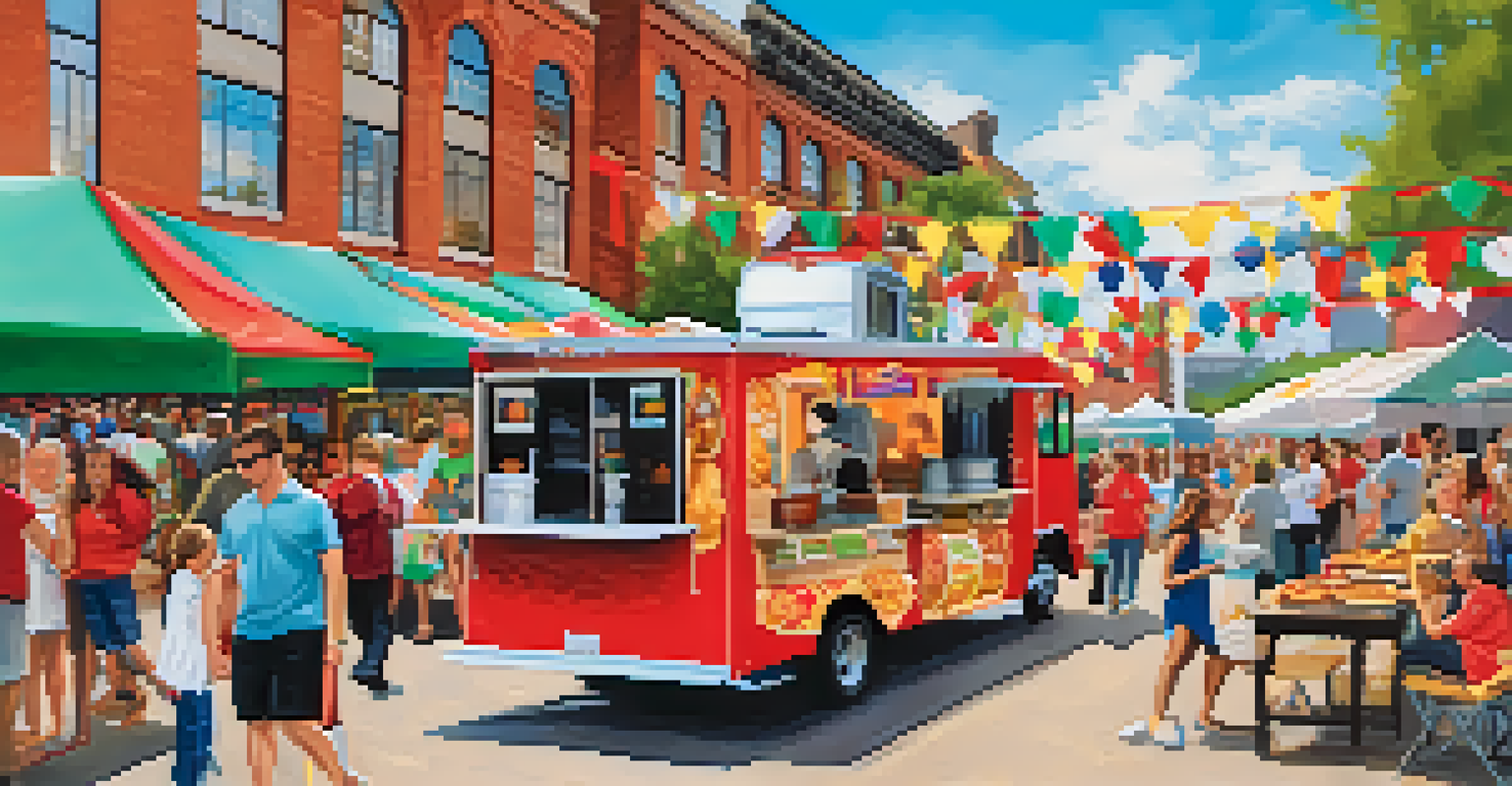Exploring Pittsburgh's Cultural Mosaic: A Diverse Community Overview

Understanding Pittsburgh's Unique Cultural Landscape
Pittsburgh is often celebrated for its stunning skyline and rich industrial history, but its true charm lies in its cultural diversity. The city's neighborhoods reflect a tapestry of traditions, languages, and customs that come together to create a vibrant community. From the bustling streets of Squirrel Hill to the colorful murals of the Hill District, each area has its own unique story to tell.
Diversity is not a reason for division, but a reason for celebration.
This cultural mosaic is a result of waves of immigrants who settled in Pittsburgh over the decades, bringing their heritage with them. Today, you can find a blend of influences from Italian, Irish, Polish, and many other cultures, each contributing to the city's identity. This diversity isn't just about ethnicity; it also encompasses art, music, food, and festivals, showcasing the richness of the community.
In essence, Pittsburgh is a living example of how different cultures can coexist and thrive together. By exploring the city's neighborhoods, you can gain insights into the traditions and histories that have shaped the lives of its residents. It's a celebration of differences and similarities, making Pittsburgh a dynamic place to live and visit.
The Role of Festivals in Celebrating Diversity
Festivals play a pivotal role in bringing Pittsburgh's diverse communities together. Events like the Three Rivers Arts Festival and the Pittsburgh International Jazz Festival not only highlight local talent but also invite participation from various cultural backgrounds. These gatherings create a sense of camaraderie, allowing residents and visitors alike to immerse themselves in the city's rich heritage.

Additionally, cultural festivals such as the Pittsburgh Folk Festival and the Little Italy Days serve as delightful showcases of music, dance, and culinary traditions. Each festival offers a unique experience, allowing attendees to taste ethnic foods, enjoy traditional performances, and learn about the histories behind these cultures. It’s a feast for the senses and a reminder of the city’s inclusive spirit.
Pittsburgh's Cultural Diversity Shines
The city's neighborhoods showcase a rich tapestry of traditions, languages, and customs shaped by waves of immigrants.
Moreover, these events often foster a sense of pride among community members. By celebrating their heritage, individuals can share their stories and connect with others who appreciate the beauty of diversity. Festivals in Pittsburgh are not just celebrations; they are meaningful experiences that strengthen the bonds within the community.
Culinary Diversity: A Taste of Pittsburgh
One of the most delicious aspects of Pittsburgh's cultural mosaic is its culinary diversity. The city boasts an array of restaurants that offer authentic dishes from around the world, reflecting the various cultures that have made Pittsburgh home. From hearty Polish pierogies to spicy Indian curries, there is something to satisfy every palate.
The beauty of the world lies in the diversity of its people.
Food is often a gateway to understanding a culture, and in Pittsburgh, dining out is a chance to explore different traditions. Local chefs frequently infuse their menus with family recipes and cultural influences, making dining an adventure for both residents and visitors. This culinary landscape not only celebrates diversity but also helps to build community connections.
Moreover, food festivals and farmers' markets are great places to experience this culinary richness firsthand. Events like the Pittsburgh Food Truck Park showcase a variety of cuisines, allowing food lovers to sample dishes from various cultures in one place. Here, the act of sharing a meal becomes a celebration of community and cultural exchange.
Art and Music: Expressions of Cultural Identity
Art and music serve as powerful mediums for expressing cultural identity in Pittsburgh. The city is home to a thriving arts scene, where local artists draw inspiration from their diverse backgrounds. Galleries and art installations throughout the city often reflect themes of heritage, community, and social issues, making art a vital part of the cultural landscape.
Music is another integral aspect of Pittsburgh's identity, with genres ranging from jazz to bluegrass to hip-hop taking center stage. Local musicians often incorporate elements from their cultural backgrounds into their compositions, creating a rich soundscape that reflects the city’s diversity. Venues like the Andy Warhol Museum and the Rex Theater regularly host events that highlight these varied musical expressions.
Festivals Unite Diverse Communities
Cultural festivals in Pittsburgh foster camaraderie, allowing residents and visitors to celebrate and appreciate the city's heritage.
Through art and music, the community can engage in dialogue about cultural experiences, fostering a greater understanding and appreciation for one another. Whether it’s a gallery opening or a live music performance, these artistic expressions serve as a reminder of the beauty and complexity of Pittsburgh's cultural mosaic.
Neighborhoods: A Journey Through Cultural Heritage
Pittsburgh's neighborhoods each offer a unique glimpse into the city's cultural heritage. For instance, Squirrel Hill is known for its vibrant Jewish community, with synagogues, kosher restaurants, and cultural events that celebrate Jewish traditions. Conversely, the Strip District showcases Italian heritage through its markets, bakeries, and annual festivals.
Exploring these neighborhoods reveals how history and culture interweave to create the city's identity. Each area tells its own story, from the Polish traditions of Polish Hill to the African American culture highlighted in the Hill District. Walking through these neighborhoods, you can see how architecture, cuisine, and community events reflect the lives of those who call them home.
Moreover, engaging with local residents can provide deeper insights into the cultural significance of each neighborhood. Many community members are eager to share their stories and experiences, making it easy to appreciate the rich tapestry of cultures that contribute to Pittsburgh's charm. The neighborhoods are not just locations; they are living representations of the city’s cultural mosaic.
Education and Cultural Exchange in Pittsburgh
Education plays a significant role in promoting cultural understanding in Pittsburgh. Local institutions often host events and workshops that explore different cultures, encouraging dialogue and mutual respect among residents. Schools also incorporate multicultural education into their curricula, helping students appreciate the diversity around them.
Programs like the Pittsburgh Cultural Trust's education initiatives aim to connect students with the arts and cultures of various communities. These programs provide opportunities for young people to engage with different cultural expressions, fostering a sense of belonging and appreciation for diversity. By learning about different traditions and histories, students can develop a broader worldview.
Education Promotes Cultural Understanding
Local educational initiatives and cultural exchange programs help deepen appreciation for diversity and foster inclusivity among residents.
Furthermore, cultural exchange programs offer unique experiences for residents to connect with others from different backgrounds. These exchanges promote inclusivity and understanding, as participants share their stories and traditions. In this way, education becomes a bridge, linking individuals from diverse backgrounds and enriching Pittsburgh's cultural fabric.
Challenges and Triumphs in a Diverse City
While Pittsburgh celebrates its cultural diversity, it also faces challenges that come with it. Issues such as discrimination and cultural misunderstandings can arise, highlighting the need for ongoing dialogue and education. However, many community organizations and leaders are committed to addressing these challenges head-on.
Efforts to promote inclusivity and understanding are evident in various initiatives across the city. Organizations like the Greater Pittsburgh Community Food Bank and the Refugee and Immigrant Center work tirelessly to support marginalized communities and foster connections among residents. Through these efforts, Pittsburgh is taking steps toward a more inclusive future.

The triumphs of Pittsburgh's diverse community are also worth celebrating. By embracing its differences, the city has become a model for how diverse groups can collaborate and thrive together. The ongoing commitment to understanding and celebrating these differences ensures that Pittsburgh continues to grow as a vibrant cultural mosaic.
Looking Ahead: A Vision for an Inclusive Pittsburgh
As Pittsburgh continues to evolve, its cultural mosaic will undoubtedly grow richer and more complex. The city's residents are committed to fostering inclusivity and understanding, ensuring that all voices are heard and valued. Initiatives aimed at engaging underrepresented communities will play a critical role in shaping the future of Pittsburgh.
Looking ahead, it’s essential to continue fostering dialogue and collaboration among different cultural groups. Community events, educational programs, and cultural exchanges will be key in building bridges and promoting empathy. The more we understand one another, the stronger our community will become.
Ultimately, the vision for Pittsburgh is one where diversity is celebrated, and every individual feels a sense of belonging. By embracing its rich cultural heritage, Pittsburgh can continue to thrive as a unique and inclusive city, where everyone is proud to call it home.